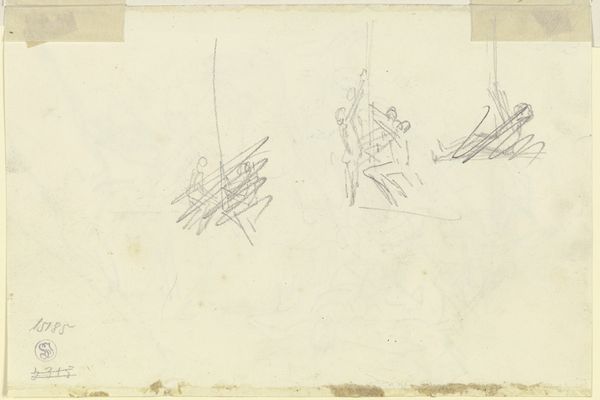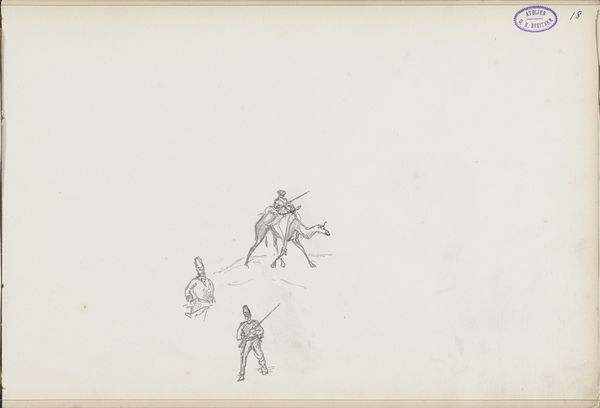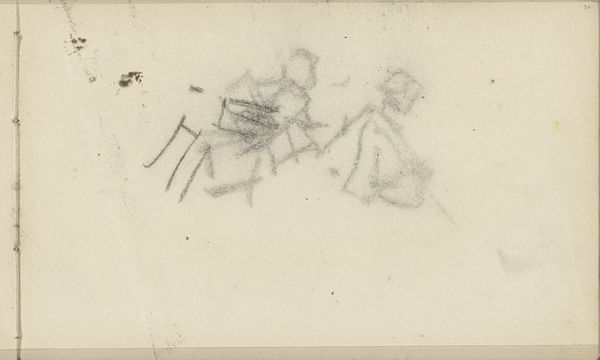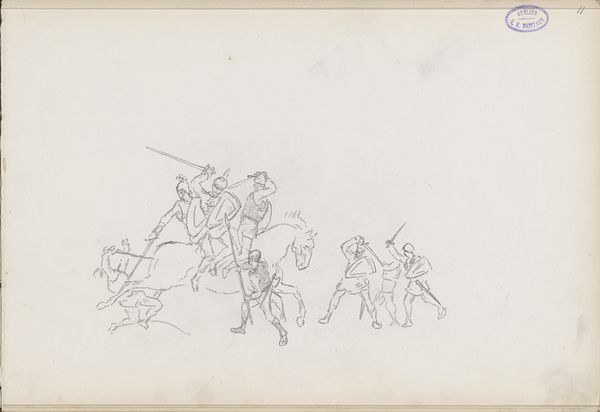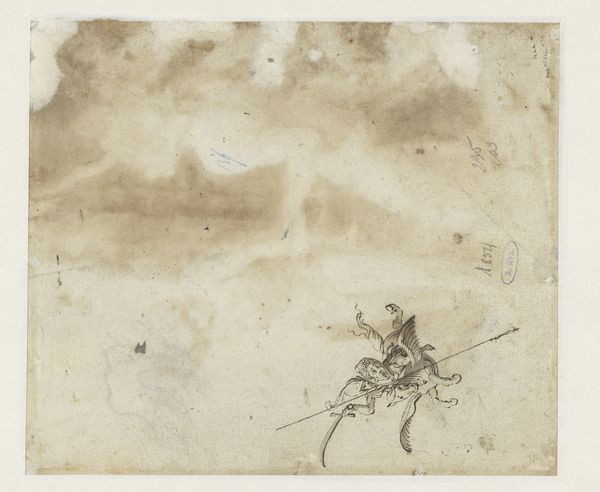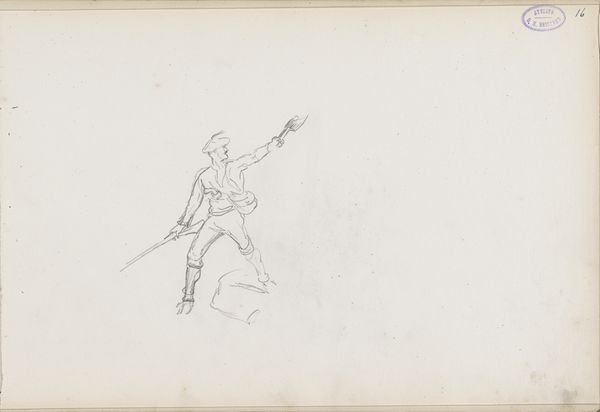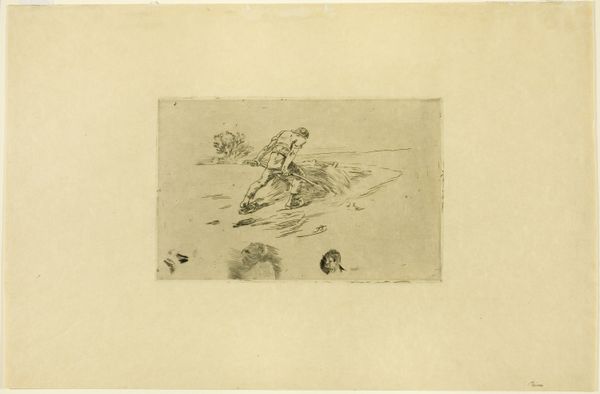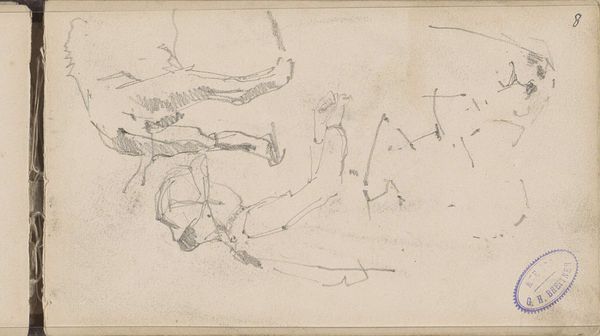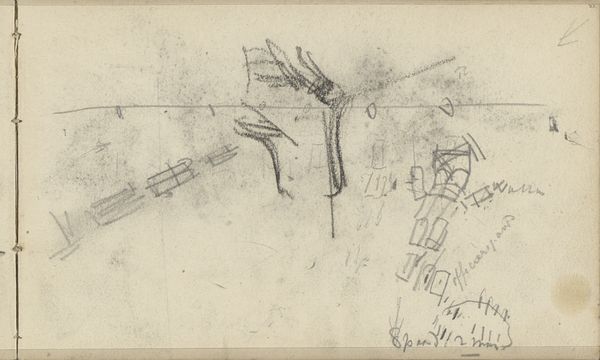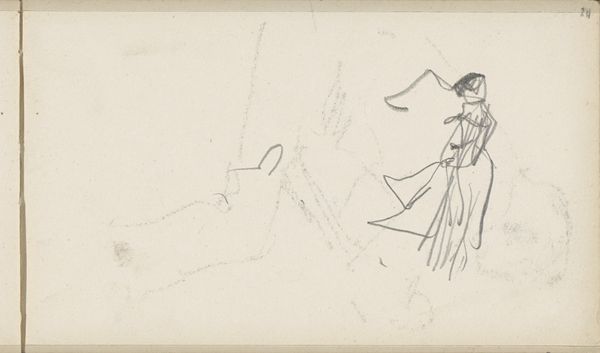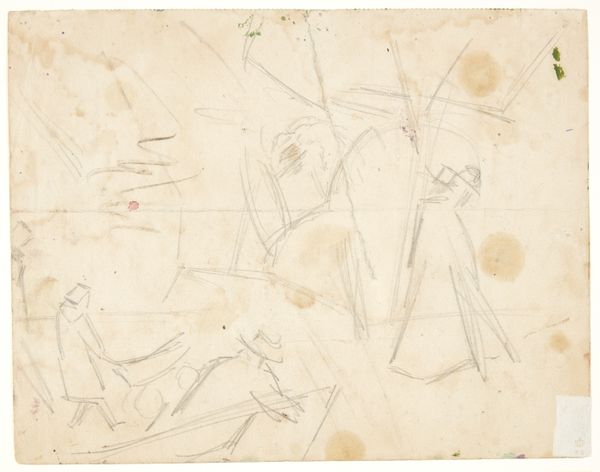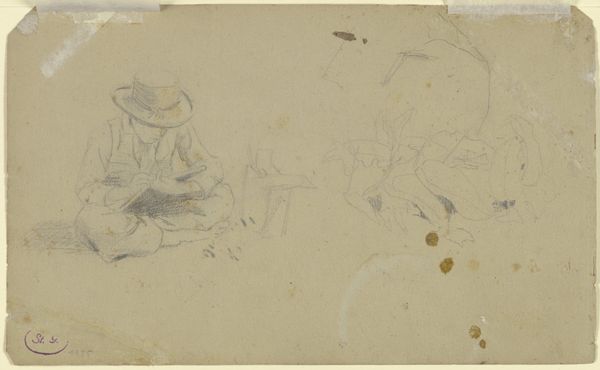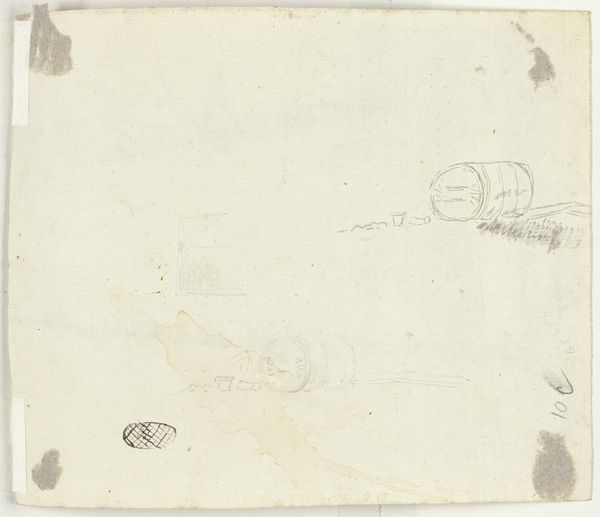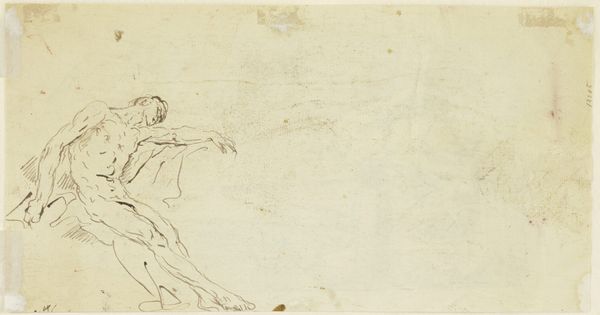
drawing, ink
#
drawing
#
narrative-art
#
baroque
#
etching
#
figuration
#
ink
Copyright: Public Domain
Editor: This is "Figuren-, Blatt- und Baumstammskizzen," or "Figure, Leaf, and Tree Trunk Sketches," an ink drawing by Jan Lievens, from around the 1650s or 60s. It looks like a study of figures in motion, almost like a storyboard. What stands out to you? Curator: I notice the paper itself – its apparent age and the stains. Think about its cost at the time. Was this readily available, or was it a precious commodity? The quick, assured strokes of the ink also tell us about the artist's hand. How might his access to materials and the speed of production have impacted the work's final form and its place in the art market? Editor: So, it's about more than just the image; it's about the economics of art making? Curator: Exactly. Consider the labour involved in creating the ink, preparing the paper, and the skill required for such rapid sketching. Who benefitted from that labour, and what kind of audience was this work intended for? Was it purely functional, or was there an expectation of display or sale? Editor: I guess I hadn't thought about the value of the materials themselves. It does make me think differently about the "sketch" as a commodity. Curator: These sketches provide valuable insight into Lievens' working process, his engagement with readily available resources, and the societal context shaping his artistic production. The seemingly simple choice of ink and paper is intrinsically linked to the social and economic forces of the 17th century. How does analyzing these elements shape your understanding of the artwork’s place in history? Editor: Seeing the sketch through that lens—thinking about materials and labor—adds so much context. I now realize the significance goes beyond just the artist's skill. Thanks for illuminating that.
Comments
No comments
Be the first to comment and join the conversation on the ultimate creative platform.
